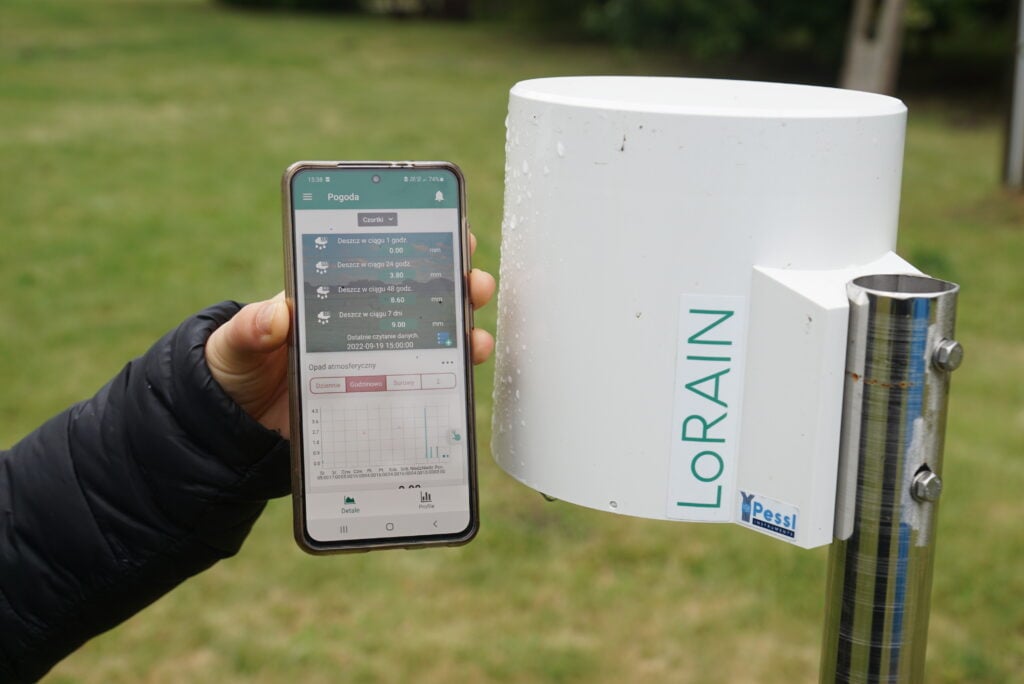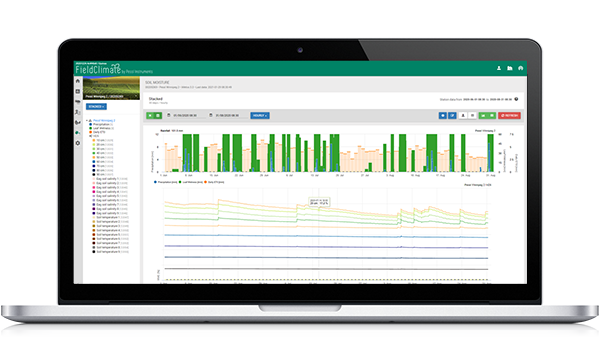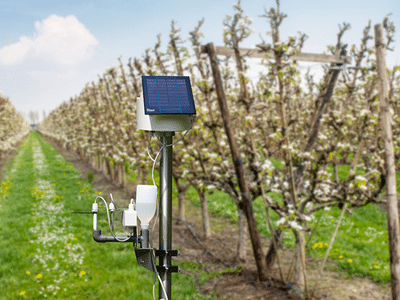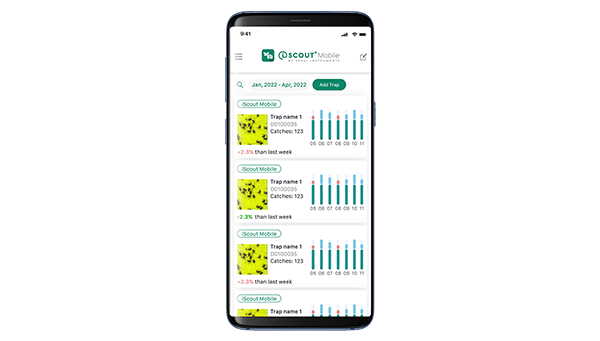We know when it will rain almost to the minute
Use Case: Farming record in Poland
In 2018, the farm of the Krasnodębski family located in the village of Niemirki achieved an impressive yield of winter rape of 6.19 t/ha. This result was only a ton lower than the then world record and was officially recognized as a Polish record.
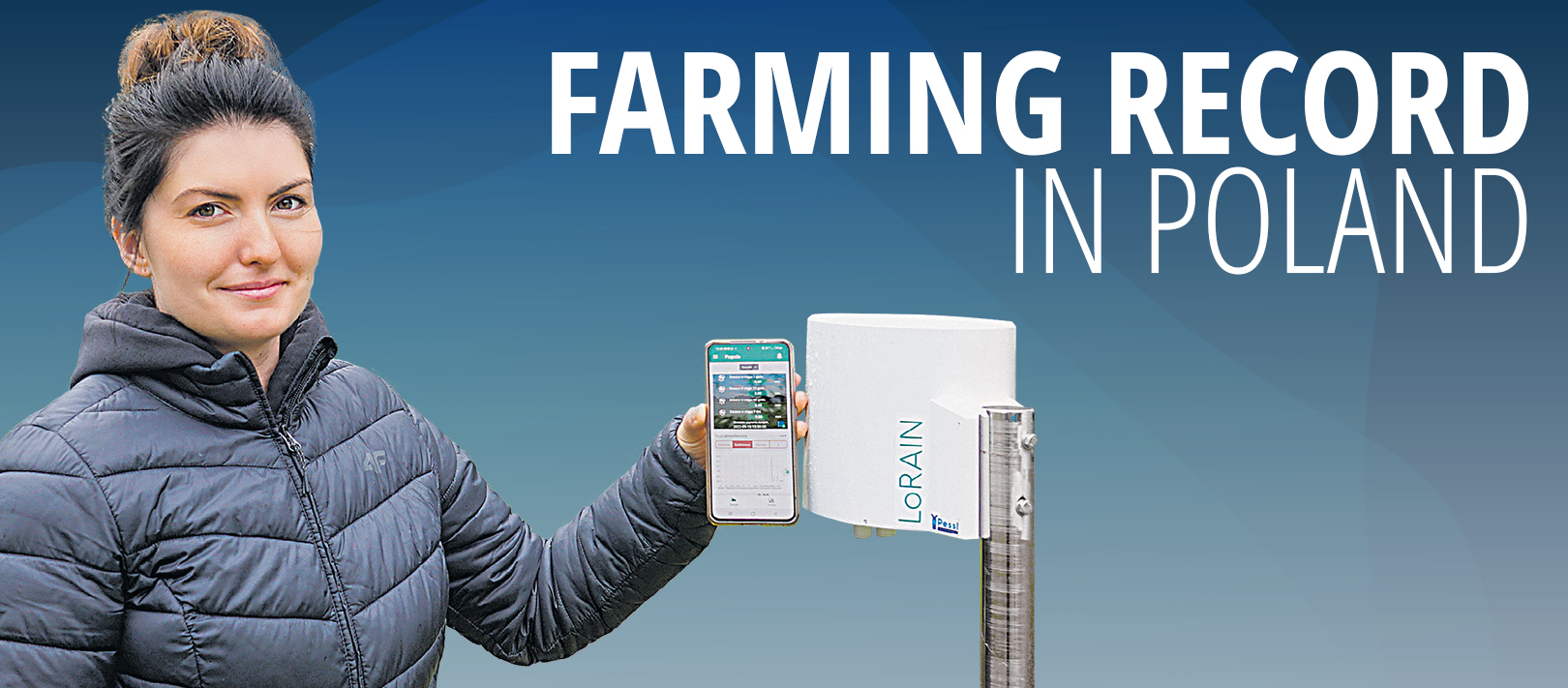

It was not a one-time “shot”, because this year rapeseed on this farm was pouring 6.10 t/ha. What do farmers think is the recipe for achieving such crops? It is a combination of many factors, including selection of varieties, sowing date, field treatments, proper fertilization or protection, but – as Ewa Krasnodębska says – the most important thing in all this is the weather and although we have no influence on it, thanks to our own weather stations we can monitor it in all possible ways. And we do.
Mazowieckie province
The first weather station appeared on this farm in the spring of 2019. The equipment of the METOS® brand, produced by the Austrian company Pessl Instruments, was selected. Why?
“Because it was sold through the chain to a John Deere dealership. It was important for us, because we have a lot of confidence in this American brand, using five tractors from this manufacturer. If John Deere signs this, it means that the equipment is reliable and proven,”
explains Ewa Krasnodębska.
Farmers chose the weather station in full version. They fixed it in a field near the farm. No power supply was needed because the station has a built-in battery that is charged with electricity generated in the solar panel.
The instrumentation placed on it allows you to monitor the amount of precipitation, wind strength and direction, temperature and relative humidity, solar radiation intensity and temperature, salinity and soil moisture.
An additional element is a sensor called “artificial leaf”, which measures the length of the leaf wetting period, and this information, supported by mathematical models, allows you to determine the risk of diseases, suggesting their course and intensity. All data is sent wirelessly to the server. Access to them is possible through an application installed on a phone, tablet or computer. You can view current data as well as historical data.
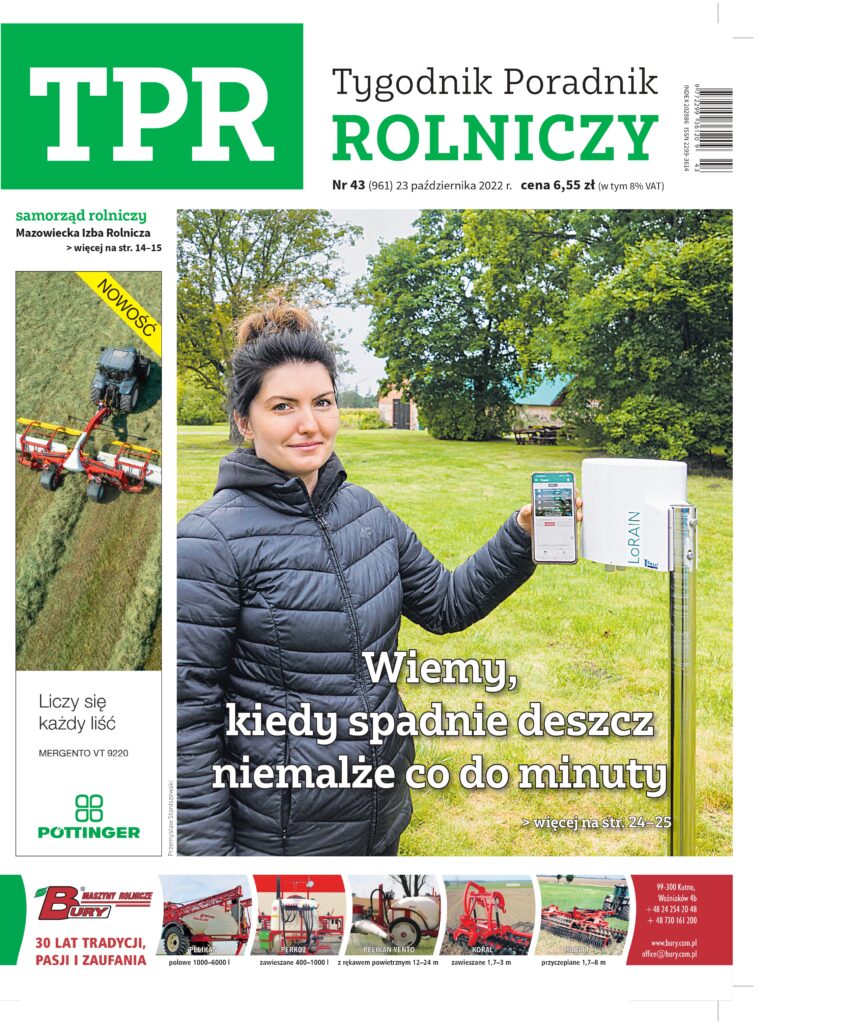

By paying the subscription, farmers also receive access to the weather forecast, which includes not only data from the station, but also satellite observations and those collected from weather radars.
“Such information is very valuable, because it allows you to perform field treatments “on the spot,”
emphasizes Ewa Krasnodębska.
“It is enough to look at the phone and I know, for example, how much rain has fallen, when it will rain and in what amount. And I will add that this prediction is 99 percent correct. Such knowledge is crucial, for example, when planning fertilization. We had such a situation with the second dose of nitrogen in the wheat that none of the public weather forecasts given by the media predicted rain. And it is known that fertilization in such conditions does not make sense, because the nitrogen contained in the fertilizer, instead of dissolving in water and penetrating into the roots, will be lost by volatilization. But data from our weather station indicated one precipitation in mid-April. We trusted these indications and spread the fertilizer ahead of schedule. Rain did fall, about 12 liters of water per square metre, which allowed the nitrogen to be moved deeper into the soil profile and utilized.
Data from the station on the amount of rainfall and soil moisture also help farmers find the right moment to start performing field treatments, without the risk of damaging the soil structure. On the other hand, knowing the humidity of the air,”
as Ewa Krasnodębska explains
“allows you to determine the best time to ventilate grain in silos, without the risk of deterioration of grain parameters.
A great solution is to provide information on the potential threat to crops from fungal diseases. At first, we didn’t really believe it and when the system, taking into account the fact that it is cold and dry, suggested to completely abandon the T1 treatment, protecting the plantation against stem base pathogens, we did so, but only on a small part of the area. Then, on the entire cereal plantation, we performed the T2 treatment to protect the upper leaves. The result was that the field treated with only the T2 treatment gave half a tonne more yield compared to the field with two fungicide treatments T1 and T2,”
adds Ewa Krasnodębska.
According to the assurances of farmers, the first weather station paid off in a year.
Therefore, already in mid-2020, another one was purchased, this time in the demo version, measuring the amount of precipitation, air temperature and its humidity.
Soon after, a subsurface probe for measuring soil moisture and temperature was purchased. The Krasnodębski family also purchased two rain gauges.
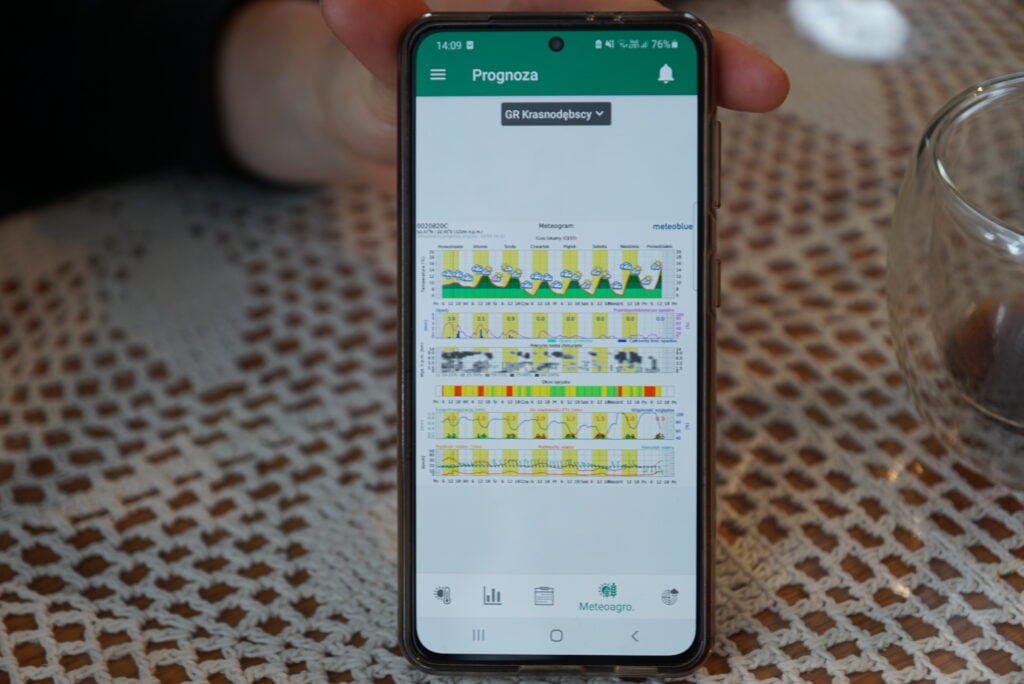

Earlier, in 2019, they invested in a bug trap that is powered by a battery and a solar panel. The device is equipped with a camera that takes high-resolution photos of caught insects once a day, sending them to the user’s phone. In this way, for example, the occurrence of cabbage fly in rapeseed is monitored.
“This device helps us in field observation and helps in early detection of pests. Thanks to this, we can step in with security at the right time,”
says Ewa.
“And the Delta T parameter indicated in the system is helpful in determining the conditions for carrying out such a treatment and the effectiveness of pesticides. It is a combination of temperature and air humidity. When it is too low, it is not worth performing the treatment, because the drops will flow down the leaves. The effectiveness of the spray will also be poor when this parameter is too high, because it will mean that the drops will dry out before the preparation reaches the plant.”
Pessl Instruments has already sold 55,000 weather stations worldwide. Over 900 installations are located in Poland, of which approx. 30% is on farms. The price of the base weather station starts from 1100 euros net.
Przemysław Staniszewski
The weather station visible in the picture measures the amount of precipitation, air temperature and humidity, leaf humidity, wind strength and direction and solar radiation intensity. It is powered by a battery and a solar panel. This solution works well in spring and summer. In late autumn and winter, due to insufficient sunlight, it is necessary to reduce energy consumption from the station, which is achieved by reducing data transfer.
Farm business card
Celina and Wojciech Krasnodębski with their daughters Ewa and Dorota and son Adam run a farm in the village of Niemirki (Sokołów county). They cultivate 350 hectares. Class IV soils predominate, on which wheat, rapeseed and corn harvested for grain are sown. The farm uses precision farming solutions, e.g. automatic driving of tractors with the use of GPS navigation, spreading fertilizers with variable dosage on each section or automatic activation or deactivation of sections of a maize seeder. The machine park is dominated by John Deere tractors, of which there are five. The most powerful 180 hp 7430 Premium performs stubble cultivation and soil preparation with machines, the 6820 with a front loader helps with loading work, the 6920 is used for sowing cereals, rapeseed and maize, the 6530 works with a spreader and sprayer, and the 6930 works in addition to plowing transportation. Harvesting is performed on two New Holland combines – TC56 and CX8.80.
“The weather station is an excellent tool in disputes with the insurance company, because it collects data on the occurrence of frost or hail,”
says Ewa Krasnodębska.
A trap with integrated electronics and a sticky floor is used to monitor the pest population. In the field, the device is self-sufficient as it is powered by batteries and a solar panel.
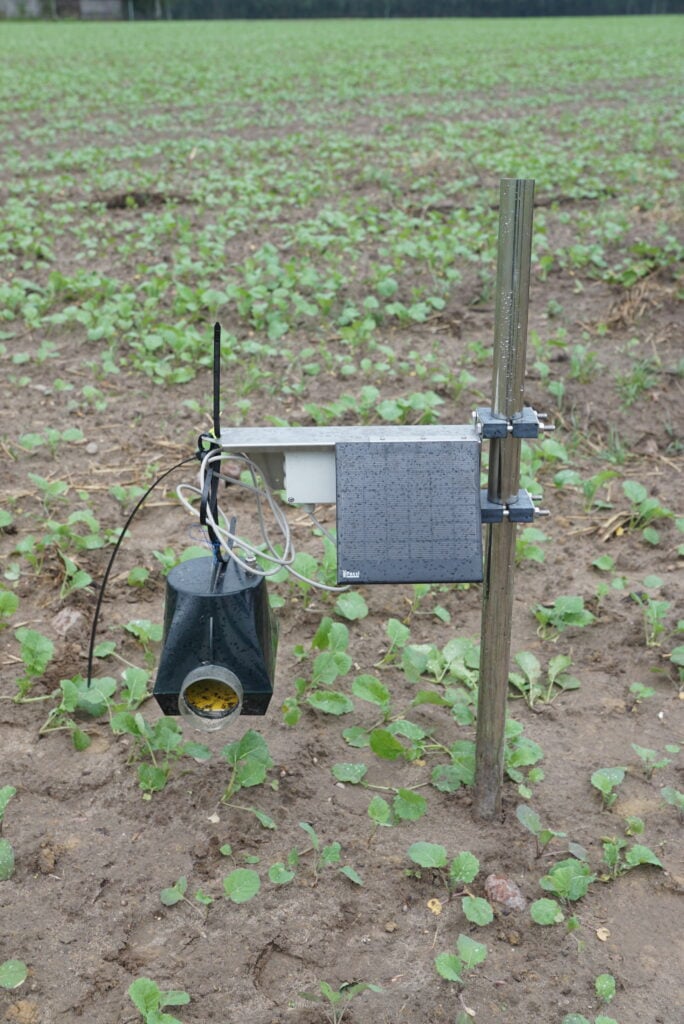

The Krasnodębski farm has a fleet of five John Deere tractors with a power of 120 to 180 hp.


This rain gauge is located about six kilometers from the farm.
The collected data can be read on a smartphone with the application installed.
